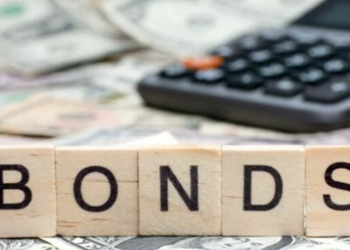The latest data from the Central Bank of Nigeria reveals Nigeria’s 364-day treasury bills have fallen to 5.3%.
182-day bills went for stop rates of 3.78% and 91-day rates 2.49% per annum respectively. The total amount on offer for 364-day bills was N70.50 billion with investors staking about N190.23 billion. The total amount on offer for 182 and 91-day were N14 billion and N1.8 billion, while investors staked N29.45 billion and N23.77 billion respectively.

Why this matters: The massive disparity between the subscriptions and the offers suggests investors are willing to earn a negative real return compared to the higher risk in other assets such as stocks and real estates.
Meanwhile, the Central Bank of Nigeria (CBN) has stated that it would issue N512.7 billion worth of Treasury Bills in the second quarter of 2020 (Q2).
READ MORE: Nigerian Treasury Bills: Learn everything about Tbills
The disclosure was made by the CBN in the Treasury Bill programme released on its website, covering the second quarter of 2020. The N512.7 billion treasury bill planned for Q2 2020 represents a drop of N361.7 billion when compared to the over N874.4 billion issued in Q1 2020.
Details: The breakdown of the calendar shows that N94.24 billion will be raised in the 91-day maturity period, N86.18 billion for 182 days and N332.35 billion for 364 days maturity period.
Basically, the CBN sells T-bills on a bi-weekly basis to investors and is one of the safest investments available. Interests are paid upfront and the principal paid in full upon maturity.
Understanding Treasury Bills: Basically, when the government is going to the financial market to raise money, it can do it by issuing two types of debt instruments – treasury bills and government bonds.
Treasury bills are issued when the government needs money for a short period while bonds are issued when it needs debt for more than say five years. The issuance of treasury bills is also used as a mechanism to control the circulation of funds in the economy.
READ MORE: Technical Analysis of Zenith Bank for 9th March 2020
Treasury bills have a face value of a certain amount, which is what they are actually worth. However, they are sold for less. For example, a bill may worth N10,000, but you would buy it for N9,600. Every bill has a specified maturity date, which is when you receive the money back.
The government then pays you the full price of the bill (in this case N10,000), giving you the opportunity to earn N400 from your investment. The amount that you earn is considered as the interest, or your payment for lending your money to the government. The difference between the value of the bill and the amount you pay for it is called the discount rate and is set as a percentage.





















The lowering of TB rate recently based on the idea of risk free to me is an illusory myopism, for some few reason based on common sense:
1. Even if TB falls to 1% pa, people will still stick their head to it, because their is nothing as certain as near certain. I keep asking why will CBN forget regulating banks but jump into regulating the banks publics. What is the ratio of savings rate to lending rate. The point is if the CBN instructs banks to make their savings rate as a percent of their lending rate (say 30%) then who will be running into the TB market. The funds will be channeled into key activities through lending.
2. CBN should never forget that their role is monetary and not structural. Thus monetary policy cannot kill itself for Nigeria fundamental issues